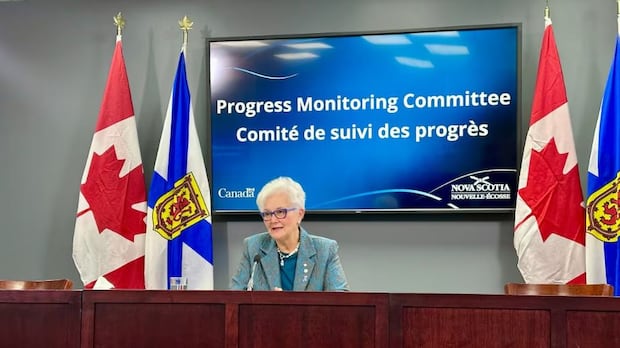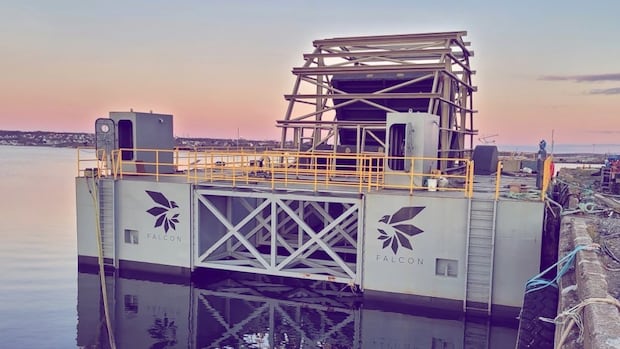History written in stone: Tours offer glimpse of Mi’kmaw petroglyphs
;Resize=(620))
On the shoreline of Kejimkujik Lake not far from Merrymakedge Beach, Jonathan Oickle crouches over a large outcropping of slate rock.
He dampens the smooth slate to accentuate a detailed engraving of a woman’s peaked cap, one of more than 500 carvings etched in stone by the Mi’kmaq centuries ago on the lakeshores of Kejimkujik National Park and National Historic Site. Some of the oldest petroglyphs in the park are estimated to be 800 to 1,000 years old.
“These are essentially the history books of the Mi’kmaw people,” said Oickle, a Parks Canada interpreter leading a guided tour of a site that’s part of one of eastern North America’s largest collections of petroglyphs.
A member of the Wasoqopa’q (Acadia) First Nation, Oickle is back for his second summer at the national park in southwestern Nova Scotia. He said he relishes the opportunity to share his culture with visitors from around the world.
Keeping the history alive
“They didn’t have a written language before European contact, so their way of telling stories and their history was on these rocks with the petroglyphs,” Oickle said. “That’s why it’s so important that we try and learn from these petroglyphs.”
When Keji was designated as a National Historic Site in 1995, a monument in the shape of the peaked cap was built near the parking lot close to the Merrymakedge site. It commemorates the designation and the cultural significance of the petroglyphs. It’s also the starting point of the tour, which offers park visitors their only access to the restricted area.
“It’s very important to kind of keep that history going for our next generations and our generation,” said Oickle. “That’s the way history gets passed along and stories get passed down.”
Mi’kmaw petroglyphs and their stories
The Merrymakedge petroglyph site is one of four on the shores of Kejimkujik Lake and George Lake, but it’s the only one open to the public by way of the guided tour. When water levels are high, the petroglyphs are hidden.
About a five-minute walk through the woods from the monument is a seating area where visitors must remove their footwear. The slate is very soft, and rocks that could get stuck in the sole of someone’s shoe might scrape the top of the slate and damage the petroglyphs, said Oickle.
Some of the images at this site portray caribou, European ships and a compass pointing in the four cardinal directions.
One of the largest reflects the peaked cap, which was traditionally made out of birchbark. Mi’kmaw women would use small flakes of stone, Oickle explained, to carve in detail by peeling off the first layer of bark. Within the cap is a feather representing wisdom.
“This could have been a knowledge keeper or an elder woman who had lots of, lots of knowledge,” he said.
“Essentially what we’re looking at right here is a portrait of a woman from hundreds of years ago that was drawn onto this rock and perhaps to go along with her knowledge, is the reason why the petroglyph is so big, because this is actually the biggest peaked cap in Kejimkujik.”
It’s difficult to date the petroglyphs, Oickle said. The carvings of the ships could have coincided with contact with Europeans around the 18th or 19th centuries.
Mother Nature takes toll
Many of the images have faded over time. When the lakes freeze over in winter, ice can scrape across the slate, causing wear on the petroglyphs.
Graffiti also defaces the rock.
“It wasn’t always a protected site like it is today,” Oickle pointed out.
Buoys now float in the water along the perimeter of the site, preventing paddlers from coming onto the shore.
“You can see some really sharp lines every once in a while,” he said. “Those are actually from canoes and kayaks coming up and scraping across the top of the rock.”
Even today, it’s not known precisely what stories the Mi’kmaq were trying to convey in their etchings, he said.
“We just kind of make the best conclusion that we can by the details and knowledge that we do have in the culture. Everybody’s interpretation of each petroglyph could be completely different and be completely right at the same time.”
A guided tour offers the only way to see one of eastern North America’s largest collections of petroglyphs. CBC’s Molly MacNaughton met up with a Parks Canada interpreter on the shores of Kejimkujik Lake.




